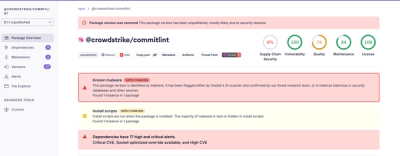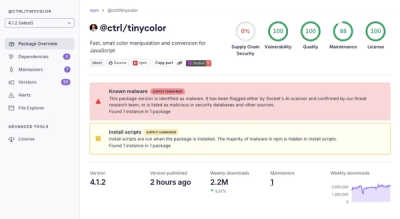useUndoable
React Hook for undo/redo functionality without the hassle.
Live Demo
Installation
yarn add use-undoable
or
npm install use-undoable
Usage
import useUndoable from 'use-undoable';
const MyComponent = () => {
const initialState = 0;
const [
count,
setCount,
{
undo,
redo
}
] = useUndoable(initialState);
return <p>{count}</p>
}
Features
(and how useuUndoable improves on existing packages)
- Familiar API similar to
useState
- You can choose how you'd like state changes to be reflected, with
mergePast, destroyFuture, or keepFuture
- Ability to set default options so that each call to
setState doesn't need to pass the same mutation behavior.
- Zero dependencies
- Tiny; less than 35 kB unpacked
Docs
This section explains the values given by the useUndoable hook. Let's assume that we've called the hook and set all of the exported values:
const [
count,
setCount,
{
past,
future,
undo,
canUndo,
redo,
canRedo,
reset
}
] = useUndoable(initialState, options);
options
If you want to set a specific mutation behavior for all state changes, you can declare the options object like so:
const options = {
behavior: 'destroyFuture'
}
This way, all calls to setCount will destroy the future array on new state changes. You can override this behavior with each call individually, if you'd like.
Therefore:
setCount(0);
will use the destroyFuture behavior and
setCount(0, 'keepFuture');
will keep the future array.
count (state)
This is the present state. Think of it like the left side of the useState hook: const [count, setCount] = useState(0).
setCount (setState)
This is the updater function. It's used to modify the current state. Think of it like the right side of the useState hook: const [count, setCount] = useState(0)
It mimics the useState behavior in that you can either pass a direct value
setCount(42);
or you can pass a callback function to which the present state is passed as a parameter:
setCount(c => c + 1);
// Expanded
setCount((count) => {
return count + 1;
})
When you call this function to update the state, it pushes the current present value to the past and updates it with value you provide.
Mutation behavior
Version 2.0.0 added the mutationBehavior argument to this function. It allows you to specify how you'd like the new state to be mutated when you call setCount.
For example:
setCount(c => c + 1, 'mergePast')
The default value is mergePast.
The following are the possible values:
mergePastReversed
This will merge the future (reversed order) into the past, keeping all the changes in the state.
Let's say the state looks like this:
{
past: [0, 1, 2, 3],
present: 4,
future: []
}
If you call undo twice, the state will look like:
{
past: [0, 1],
present: 2,
future: [3, 4]
}
If you then call setCount(c => c + 1), the state will finally look like:
{
past: [0, 1, 4, 3, 2],
present: 3,
future: []
}
As you can see here, the future (3, 4) was reversed and merged into the past (0, 1), right before the previous present value (2).
Why do it this way?
Although the standard behavior of most undo/redo packages we've found default to the destroyFuture option, this has a few downsides. Primarily, if you make a state change after undoing something, all of the future states will be lost. With our mergePast... option, no state change will ever be removed; everything can be undone.
mergePast
This is the same behavior as above, where the future is pushed into the past, but the order is not reversed.
As such, the final state would instead look like:
{
past: [0, 1, 3, 4, 2],
present: 3,
future: []
}
destroyFuture
This is the standard behavior of many undo/redo packages you'll come across. When you undo a change and then update it via setCount, the future is reset to an empty array.
Consider the following:
{
past: [0, 1, 2, 3],
present: 4,
future: []
}
If you call undo twice, the state will look like:
{
past: [0, 1],
present: 2,
future: [3, 4]
}
If you then call setCount(c => c + 1), the state will finally look like:
{
past: [0, 1, 2],
present: 3,
future: []
}
keepFuture
This is similar to the above, but instead of deleting the future, it'll keep it.
Assume we've started with the same default state, pressed undo twice like above, the final state will be:
{
past: [0, 1, 2],
present: 3,
future: [3, 4]
}
past, future
As seen above, both of these objects are just an array of the previous/future actions that you've set. You usually won't need to use either of these, but they're exported anyway.
undo
This is a function accepting zero parameters that pulls from the past array and moves the most recent item to the present. While doing so, the present state is pushed to the future object.
redo
This is a function that accepts zero parameters that pulls from the future array and moves the most recent item to the present. The current present is pushed to the past.
canUndo, canRedo
A boolean that indicates whether or not you can undo the latest action.
reset
This function empties both the past and future arrays and sets the present state with the value you provide. If you do not provide a value, it defaults to the initialState you originally called the useUndoable hook with.
reset(42);
Changing function/variable names
Since the third value returned from the useUndoable hook is an object, you can change the names of the values like so:
const [
count,
setCount,
{
past: currentPast,
future: currentFuture,
undo: undoWithCustomName,
canUndo: canUndoWithCustomName,
redo: redoWithCustomName,
canRedo: canRedoWithCustomName,
reset: deleteEverythingYo
}
] = useUndoable([{
count: 1
}]);
deleteEverythingYo({
state: 'My new state'
});
And, of course, you can set count, setCount to anything you want by default, since they are array items.
Contributing
- Clone repo and install dependencies for the main project with:
yarn install
- Navigate into the example and do the same.
- In the root directory, run
yarn start
- In the example directory, run
yarn start
License
This project is licensed under the terms of the MIT license. See the LICENSE file.



